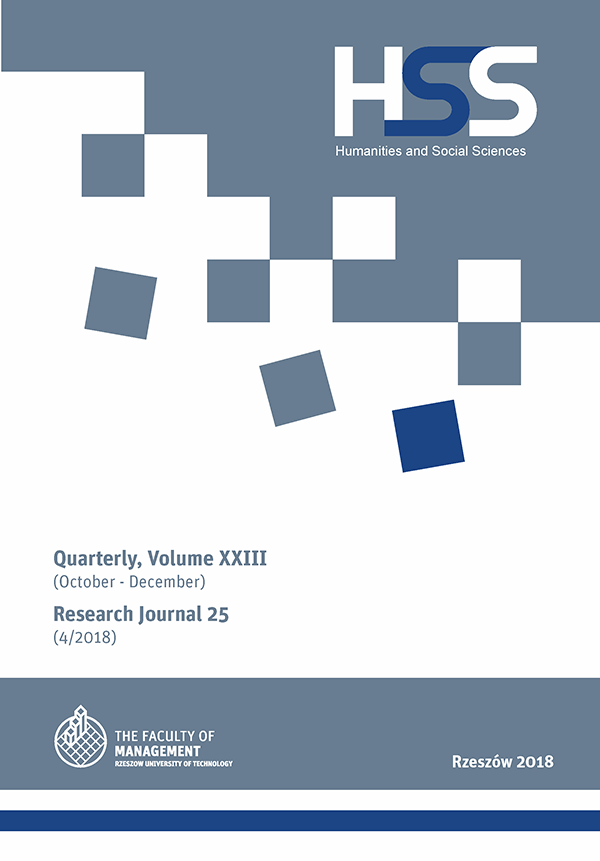Abstrakt
Employer-employee relation is a subject of many groups, including students who are about to make their career choice and enter the labor market. The goal of paper is to identify and explore the accounting students perception of employee and employer roles and the relation between them. The following research questions are addressed: 1) How do accounting students perceive the role of employer? 2) How do accounting students perceive the role of employee? 3) How do accounting students perceive the relation between employer and employee? The considerations presented in the paper are made in interpretative-symbolic management paradigm. The inductive approach is taken. Qualitative research is applied. The Forced Metaphor-Elicitation Technique is used. The results are based on metaphors and narration analysis. The research shows that although three aspects of description: attributional, behavioral and relational can be distinguished, all of them constitute the meaning given by the students to the employer-employee relation. The employer is characterized mostly by his features, mainly dignity, force and self-assurance. Employee is described predominantly by his contribution to his work and his attitude towards employer, esp. respect and fear and, sometimes, also attempts of tricking him. The relation between employer and employee is perceived then mostly in the power-subordinance context. It is seen as unsymmetrical, esp. in the sphere of mutual influence. The impact of employer on employees is perceived to be strong in many dimensions. The influence of one single employee on employer and his business is reckoned to be rather insignificant.
Bibliografia
Baldwin M., Landau M.J., Swanson T.J. (2017): Metaphors can give life meaning, Self and Identity, August 2017, pp. 1-31.
Glinka B. (2008): Kulturowe uwarunkowania przedsiębiorczości w Polsce, PWE, Warszawa.
Hancock B., Windridge K., Ockleford E. (2009): An Introduction to Qualitative Research, The NIHR RDS EM / YH.
Jing-Schmidt Z, Peng X. (2017): Winds and tigers: metaphor choice in China’s anti-corruption discourse, Lingua Sinica (2017) 3:2, pp. 1-26
Lakoff G., Johnson M. (1980): The Metaphorical Structure of the Human Conceptual System, „Cognitive Science”, No. 4, pp. 195-208.
Kopaliński W. (2012): Słownik symboli. Warszawa, Oficyna Wydawnicza RYTM.
Ostanina-Olszewska J., Despot K. S. (2017): When soul is lost in translation: Metaphorical conceptions of soul in Dostoyevsky’s original Bratia Kramazov (The Brothers Karamazov) and its translations into Polish, Croatian and English, Cognitive Studies/Études cognitives, 2017 (17), pp. 1-16.
Pawełczyk A., Łojek E., Pawełczyk T. (2017): Metaphor processing in schizophrenia patoens: a study of comprehension and explanation of metaphors, Psychology of Language and Communication 2017, Vol. 21, No. 1, pp. 287-306.
Postuła A., Pawłowska A. (2014): Pracownik i pracodawca: wykorzystanie technik projekcyjnych w badaniu postrzegania wzajemnych relacji, Problemy Zarządzania 12/1, pp. 30-49.
Postuła A., Pawłowska A. (2016): Pracownik i pracodawca w perspektywie studentów zarządzania – wyzwania dla edukacji menedżerskiej, Studia i Materiały, 2/2016 (22), cz. 2, Wydział Zarządzania Uniwersytetu Warszawskiego, pp. 131– 145.
Schmitt R. (2005): Systematic Metaphor Analysis as a Method of Qualitative Research, The Qualitative Report, Volume 10 Number 2 June, pp. 358-394.
Woodside A.G. (2008): Using the Forced Metaphor-Elicitation Technique (FMET) to Meet Animal Companions within Self, Journal of Business Research, No. 61.

